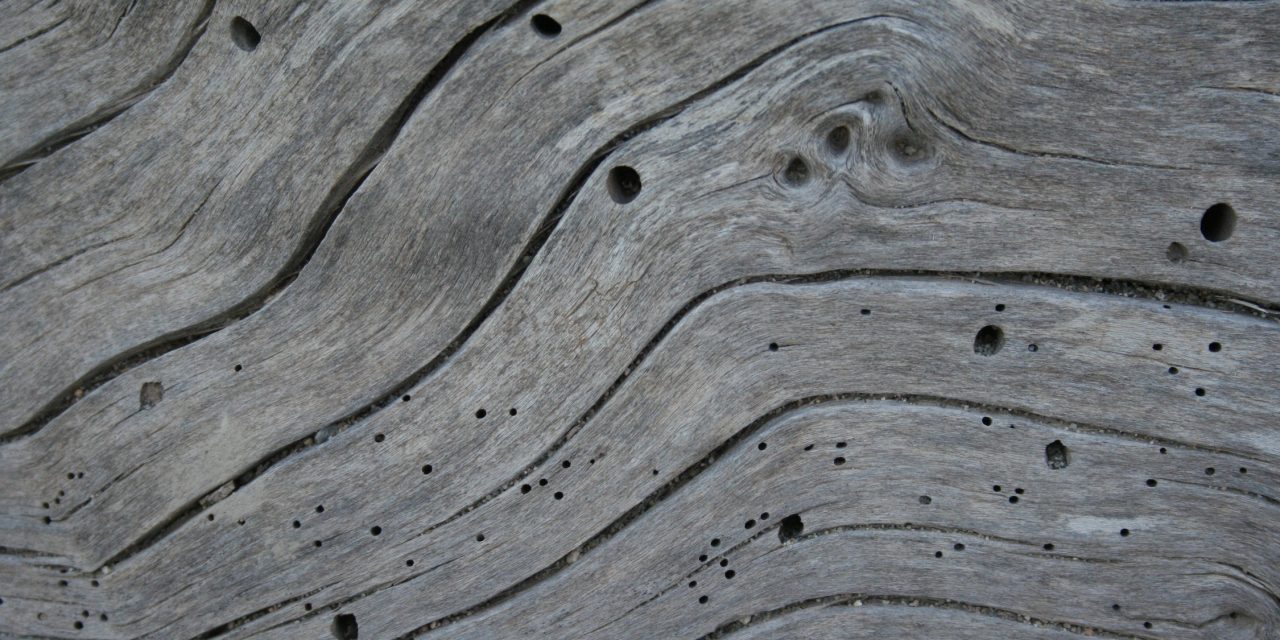Woodworm is a small, round hole found in older properties with untreated wood. These pests like narrow spaces and will eat through anything they come into contact with, including furniture or floors, if left unchecked for too long. So this could mean the end of your home? There are ways you should check, though, because not all holes seen by contractors may indicate woodworms!
What kind do you have, though? Here it will be explained, so see what’s going on before calling out professionals who might cost you more.
Woodworm holes don’t always mean it’s still an active infestation. Sometimes, they’re from a problem in the past that was treated and therefore not dangerous anymore. So if you spot possible signs of one or more types (like sawdust), then it is recommended to instruct an expert who knows what they’re doing to check things out! https://advanceddamp.co.uk/ can help with a professional damp expert.
Types of Woodworm Beetles
Deathwatch Beetle
The brownish-yellow creature has an attack pattern compared to someone throwing rocks from across the garden fence. They’re not very big, only about 8 millimetres long, but their winds are certainly mean – they’ll throw several hundred in just five minutes! You might find them on either Oak trees or Softwood if it’s well-rotted and touching infected hardwoods; however, you should keep your distance because this little guy packs quite a punch when they throw those pester balls at full force.
Signs that your home may be hosting insects include round holes about 3mm in diameter. Also, the tunnelling and abundance of frass will usually indicate the presence of pests, with their waste product being “bun” shaped rather than simply loose pieces or grains like cereal when you eat it straight away (a telltale sign!).
Common Furniture Beetle
The Anobium punctatum, or common furniture beetle as it’s often called, can be found throughout the UK. These tiny insects have dark reddish-brown bodies that measure around 3mm – 5 millimetres in length, with regular lines running down their wings. Their primary diet consists mainly of digesting sapwood from softwoods like pine trees and sides hardwoods, including birch plywood, apple tractor panels etc. However, if left unchecked, this pest may cause significant damage by gnawing at joints between boards until there are gaps large enough for other organisms’ intrusion.
The signs of an infestation can be seen as round holes 1.5 -2mm in diameter, small piles of frass within tunnels and on surfaces.
WoodBoring Weevils
Weevils are tiny insects that feed on the wood in your home. They’re typically brown and black with an elongated snout, making them look like they have long teeth when the mouth is open or closed! There are two types of weevil known to attack humans: Euophryum confines, which live under the bark. Pentarthrum huttoni can be found inside old wooden structures such as flooring, where it destroys everything within its path – including you if authorities aren’t quick enough.
Habitat is a crucial part of keeping your home free from wood-boring weevils. These creatures will attack both softwoods and hardwoods, previously subject to decay or insect damage. They can also cause destruction, where there’s evidence that it has happened before, like damp skirting boards with embedded joist, ends showing signs of infestation such as tunnelling exactly along grain lines for example – this type tends not so much towards leaving behind droppings but instead leaves you feeling sticky because of dampness.
House Longhorn Beetle
Scientifically known as Hylotrupes bajulus is more significant than most of its family of woodworm beetles. It is 15mm to 20 mm long and dark brown to black with long antennae. Besides, it has prominent grey hairs on wing covers, making it highly distinct from others.
This insect is only found in England, specifically around Camberley. The House Longhorn beetle attacks the sapwood of softwoods and can cause severe structural damage to properties if left unchecked! It has an oval emergence hole that measures 6-8mm across. It allows them access into your home or business, where they will feed on glucose reserves near insulation layers within walls – often leaving behind messy frass.
Life Cycle of Woodworm
Anobium punctatum, the typical furniture beetle, is the most prevalent wood damaging beetle. Anobium punctatum is a wood-boring beetle that means it bores through wood as a larva.
Do you think you have woodworm in your house? Anobium punctatum adults have brown, elliptic bodies and measure 2 to 4 centimetres in length.
Four stages in the development of woodworm:
- Egg- Adult beetles lay a microscopic egg in the cracks and holes of wooden items, floors, and other timber. The beetle infestation expands swiftly because these eggs are readily undetected by the naked eye.
- Larva- They instantly bore through the wood again at this point, making it difficult for homeowners to notice them. The larvae can stay buried inside the wood for several years, tunnelling and feeding throughout this stage.
- Pupa- When the larva grows in size, it becomes Pupa and is ready to leave the timber.
- Adult beetle – At the end of their growth, adult beetles rise from the wood and produce the flight holes that can be seen on the surface.
Have Problems With Woodworm Beetles?
If you are worried about woodworm beetles in your home, then don’t hesitate to contact a professional woodworm specialist to solve your problem. Once the problem has been dealt with, consider having your home repainted, so that the memories of the infestation fade, and you can start anew.














